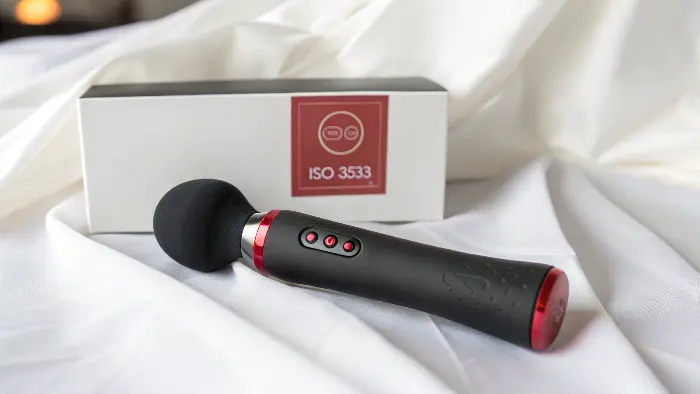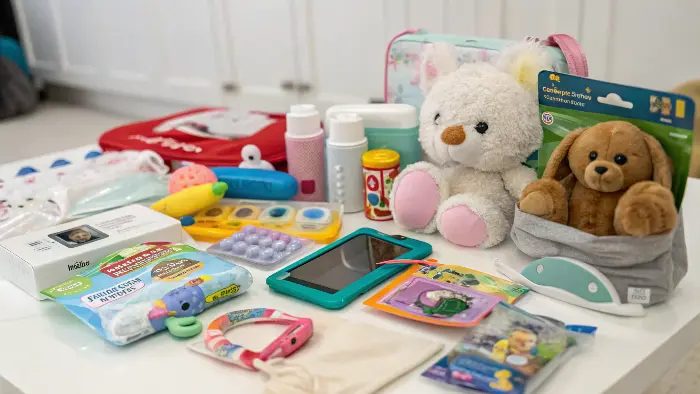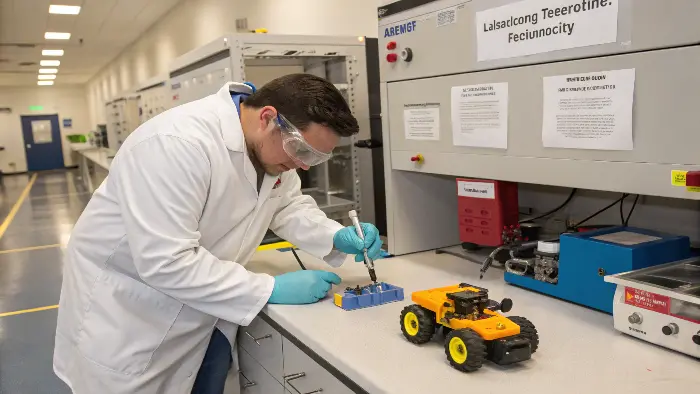Struggling with complex global rules for adult toys? It’s a headache, right? Keeping up can feel impossible, but getting it wrong is not an option for your brand.
The key to meeting international standards for adult toys lies in understanding specific regulations like ISO 3533 for design and safety, material restrictions (e.g., REACH, RoHS), and regional requirements like CPSIA. Prioritizing these ensures your products are safe, compliant, and market-ready worldwide.

It’s a wild world out there when it comes to rules and regulations, especially in our industry. I remember when I first started, it felt like trying to read a map in a different language, blindfolded! But over the years, I’ve learned that understanding these standards isn’t just about avoiding trouble; it’s about building trust with our customers and ensuring we’re putting truly safe products out there. So, let’s dive into what you really need to know to keep your adult toy business on the right side of the law, and more importantly, on the right side of your customers.
ISO 3533: The Big Deal for Sex Toy Safety, But What Does It Actually Mean for Us?
Ever felt a bit lost trying to figure out the standard for sex toy safety? It’s like everyone talks about safety, but pinning down a universal rule was tricky. This uncertainty can really stall product development.
ISO 3533, published in 2021, is the first international standard specifically for sex toys. It covers design and safety requirements for products that directly contact genital or anal areas, offering a clear benchmark for manufacturers like us. This is a game-changer!

So, ISO 3533 – sounds a bit like a secret code, doesn’t it? But honestly, it’s probably one of the most important developments our industry has seen in a while. Before this standard came along in 2021, we were all kind of guessing, or at least, borrowing bits and pieces from other product safety rules. Think about it – toys for kids had super strict rules, but adult toys? Not so much on a global, unified front. This standard finally gives us a proper playbook. It looks at things like the materials we use – are they body-safe? Are there any nasty chemicals lurking? It also covers the physical design. Can it break easily? Are there small parts that could be a problem? For us at PrivyPlay, and for any brand owner serious about quality, this isn’t just another hurdle. It’s a clear path to making products we can stand behind. I remember when the news about ISO 3533 first broke; there was a buzz, a bit of "oh great, more rules," but mostly, a sense of relief. Finally, a common language for safety! It helps us ensure that when we say "body-safe," it actually means something concrete and internationally recognized. It’s a big step up for everyone.
Beyond ISO 3533: Are There Other Sneaky Regulations We Need to Worry About?
Just when you think you’ve got ISO 3533 figured out, you hear whispers of other rules. It’s frustrating, feeling like the goalposts are always moving, especially when you’re trying to sell internationally.
Yes, beyond ISO 3533, manufacturers must be aware of regional and substance-specific regulations like REACH (Europe) for chemicals, RoHS (Europe) for hazardous substances in electronics, and CPSIA (USA) for product safety, especially if products could be considered child-appealing.

Okay, so ISO 3533 is a fantastic starting point, a real foundation. But – and there’s always a ‘but’ in regulations, isn’t there? – it’s not the only player in the game. Think of it like this: ISO 3533 is your general driving test, but then each country or region has its own specific road rules. For example, if you’re selling in Europe, you absolutely have to know about REACH. This one is all about chemicals. It stands for Registration, Evaluation, Authorisation and Restriction of Chemicals. Basically, it makes companies responsible for proving their products are safe from harmful chemicals. Then there’s RoHS – Restriction of Hazardous Substances. If your toy has any electronic components (like most vibrators do!), RoHS limits the use of specific hazardous materials like lead, mercury, and cadmium. Super important for anything with a circuit board.
And if you’re eyeing the US market, you’ve got to be mindful of the CPSIA (Consumer Product Safety Improvement Act). While it’s often associated with children’s products, some adult toys, depending on their design or marketing, could inadvertently fall under scrutiny, or at least, its principles of safety are good to follow. It’s about things like lead content and phthalates. I once had a client who nearly got a whole shipment stuck because they hadn’t considered the specific packaging requirements for one state, let alone these bigger regulations! It’s a patchwork, but a navigable one if you know where to look.
Here’s a quick rundown:
| Regulation | Region | Focus | Why it matters for adult toys? |
|---|---|---|---|
| ISO 3533 | International | Design & safety of sex toys | The primary global standard for our specific product category. |
| REACH | Europe (EU) | Chemical safety, registration of substances | Ensures materials are free from harmful chemicals. |
| RoHS | Europe (EU) | Restriction of hazardous substances in electrical/electronic equipment | Crucial for any toy with electronic components (vibrators etc.) |
| CPSIA | USA | Consumer product safety, esp. lead & phthalates in children’s products | Good practice; some adult items might attract scrutiny. |
| Prop 65 | USA (California) | Warning labels for chemicals known to cause cancer or birth defects | If selling in California, specific warnings might be needed. |
It seems like a lot, I know. But breaking it down region by region, or standard by standard, makes it manageable. And honestly, a good manufacturing partner should be on top of this stuff for you.
Material Safety: Why Are Phthalates and Heavy Metals Such a Headache in Toy Manufacturing?
You hear "body-safe silicone" all the time, but what does that really mean? And why are some materials a total no-go? It’s confusing when you just want to offer safe, quality products.
Phthalates (plasticizers) and heavy metals (like lead, cadmium, mercury) are a major concern because they can leach from materials and have documented adverse health effects. Ensuring adult toys are free from these substances is critical for consumer safety and regulatory compliance.

Let’s talk materials, because this is where the rubber (or silicone!) really meets the road in terms of safety. You’ve probably heard the terms "phthalate-free" or "no heavy metals" thrown around. There’s a very good reason for that. Phthalates are chemicals used to make plastics like PVC more flexible and durable. Sounds good, right? The problem is, some types of phthalates can leach out of the product and have been linked to hormonal disruptions and other health issues. Not exactly what you want in a product designed for intimate use! That’s why you see a big push for materials like body-safe silicone, glass, or certain types of ABS plastic that don’t need these plasticizers.
Then there are heavy metals – things like lead, cadmium, mercury, and arsenic. These can sometimes be found as contaminants in pigments used for coloring, or in cheaper plastics, or even in electronic components. The risks here are serious, ranging from neurological damage to cancer with long-term exposure. I remember a scare a few years back – not in our industry directly, but with children’s toys from a particular factory that were found to have high lead levels in the paint. It caused a massive recall and a huge loss of trust. That’s the kind of nightmare scenario we all want to avoid. So, when we at PrivyPlay talk about material safety, we’re talking about rigorous testing and sourcing. We need to know exactly what’s in our materials, right down to the molecular level if necessary, to ensure they are genuinely safe for prolonged skin contact, especially with sensitive areas. It’s not just about meeting a checklist; it’s about a fundamental responsibility to our customers. This is why ISO 3533 and REACH are so focused on what goes into the product.
Testing and Certification: How Do We Prove Our Toys Are Actually Safe and Compliant?
You believe your products are safe, but how do you prove it to customs, retailers, and customers? Just saying "it’s safe" isn’t enough in this highly scrutinized market. This uncertainty can be a real barrier.
Proving safety and compliance involves third-party laboratory testing against relevant standards (like ISO 3533, REACH, RoHS). Certifications or detailed test reports from accredited labs serve as objective evidence that your adult toys meet all required safety and chemical benchmarks.

So, we’ve talked about the standards, the nasty chemicals to avoid, and the right materials. But how do you actually show the world – your customers, customs officials, maybe even those pesky Amazon compliance bots – that your products are up to snuff? This is where testing and certification come in. It’s one thing for me, as a manufacturer, to say, "Yep, this toy is totally safe!" It’s another thing entirely to have a report from an independent, accredited laboratory that backs it up. Think of it as getting an expert second opinion, one that everyone trusts.
These labs will take your product and put it through its paces. For material safety, they might do chemical analysis to check for those phthalates, heavy metals, or other restricted substances under REACH or RoHS. For ISO 3533, they might test for physical durability, ensuring small parts don’t easily detach, or that the product can withstand normal use without breaking in a dangerous way. For example, we had a new design once, and during internal testing, we thought it was pretty robust. But the third-party lab, using standardized stress tests, found a potential weak point we’d missed. That feedback was invaluable! It allowed us to tweak the design before it went into mass production. That’s the kind of thing that saves you a fortune and a lot of headaches down the line. The end result of this testing is usually a detailed report, and sometimes, a formal certificate of compliance. These documents are your golden tickets. They’re what you show to prove due diligence and that your products are market-ready. It’s an investment, for sure, but skimping on proper testing? That’s a gamble I’d never take.
Partnering for Peace of Mind: Can a Good Manufacturer Really Take the Compliance Burden Off Our Shoulders?
Trying to manage all these global regulations on your own while also running your brand feels overwhelming, right? It’s like having two full-time jobs, and the compliance one is terrifying if you get it wrong.
Absolutely! A knowledgeable and experienced manufacturer, like PrivyPlay, can significantly simplify compliance by already understanding international standards, managing material sourcing, overseeing testing protocols, and providing necessary documentation. This allows you to focus on your brand and customers.

Look, I get it. All this talk about ISO standards, REACH, RoHS, CPSIA, chemical testing… it can make your head spin. If you’re a brand owner or a sourcing manager, your main focus is probably on marketing, sales, customer service, and growing your business. You don’t necessarily want to become a full-time regulatory affairs expert. And the good news is, you don’t have to. This is where partnering with the right manufacturer makes all the difference. A good manufacturer isn’t just someone who assembles parts. They should be your partner in compliance. At PrivyPlay, for instance, we’ve spent years navigating these waters. We’ve built relationships with reliable material suppliers who understand the requirements. We know which labs are accredited and what tests are needed for different markets.
When a client comes to us with a new product idea, or wants to source an existing design, the compliance conversation starts early. We ask: Where are you planning to sell? What are your brand’s specific quality standards? Based on that, we can guide them through the necessary steps. We can advise on material choices that are inherently compliant, arrange for the required testing, and help gather all the documentation. I remember working with a startup brand owner who was incredibly passionate but completely new to manufacturing. They were so relieved when we laid out a clear compliance roadmap for them. It took a huge weight off their shoulders. Essentially, a manufacturer who is serious about quality and safety will have a lot of this groundwork already done. They’ll understand that their success is tied to your success, and that means making products that are not only amazing but also safe and legal everywhere you want to sell them. It turns a potential nightmare into a manageable, collaborative process. So yes, choose your manufacturing partner wisely – it can make all the difference! 🔥
Conclusion
Staying on top of adult toy regulations is vital. Understanding ISO 3533, material safety, and regional rules, then proving it with testing, ensures your brand’s integrity and customer safety. It’s complex, but totally doable with the right approach.
